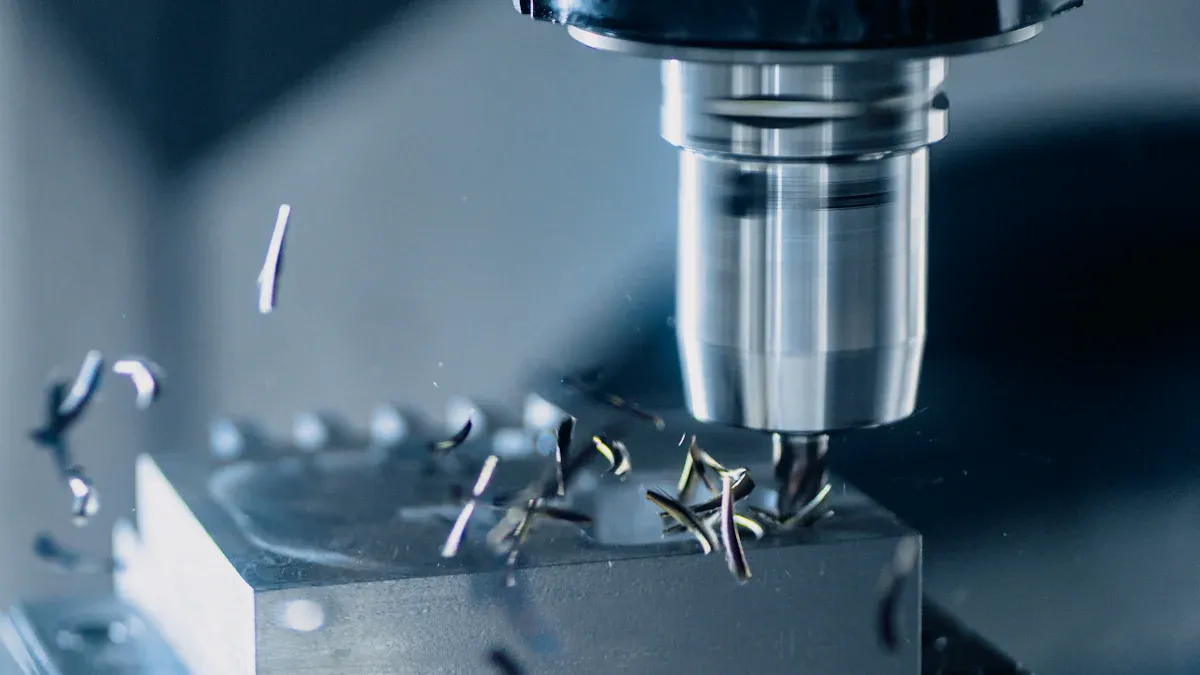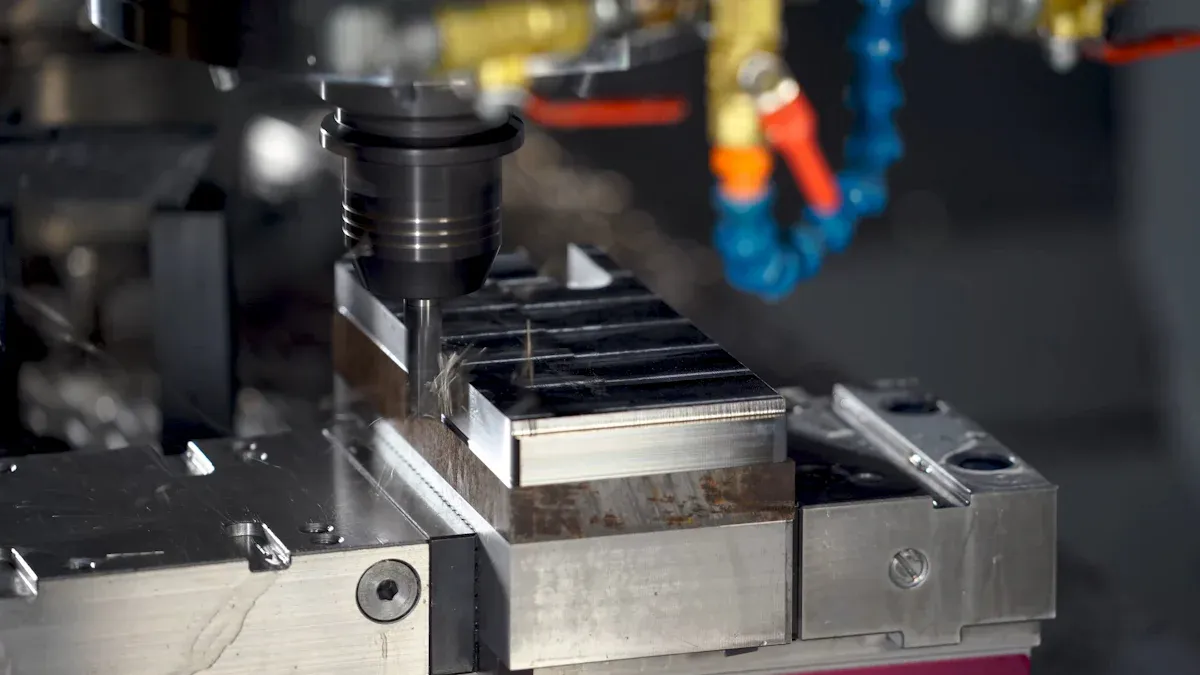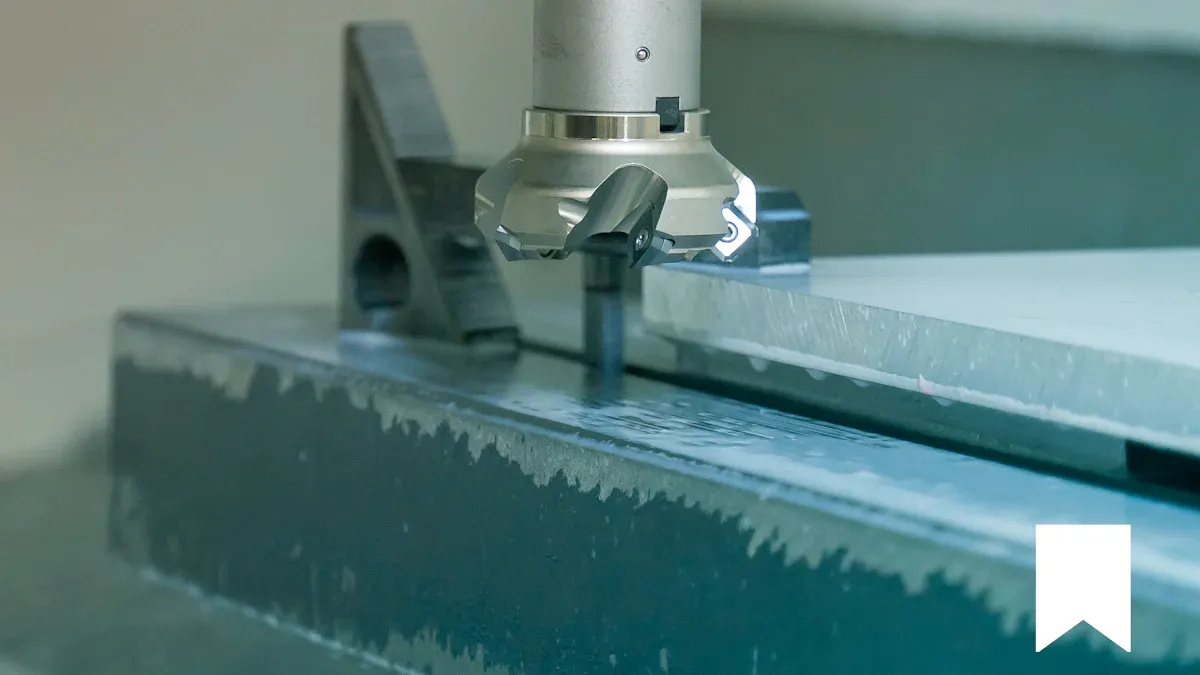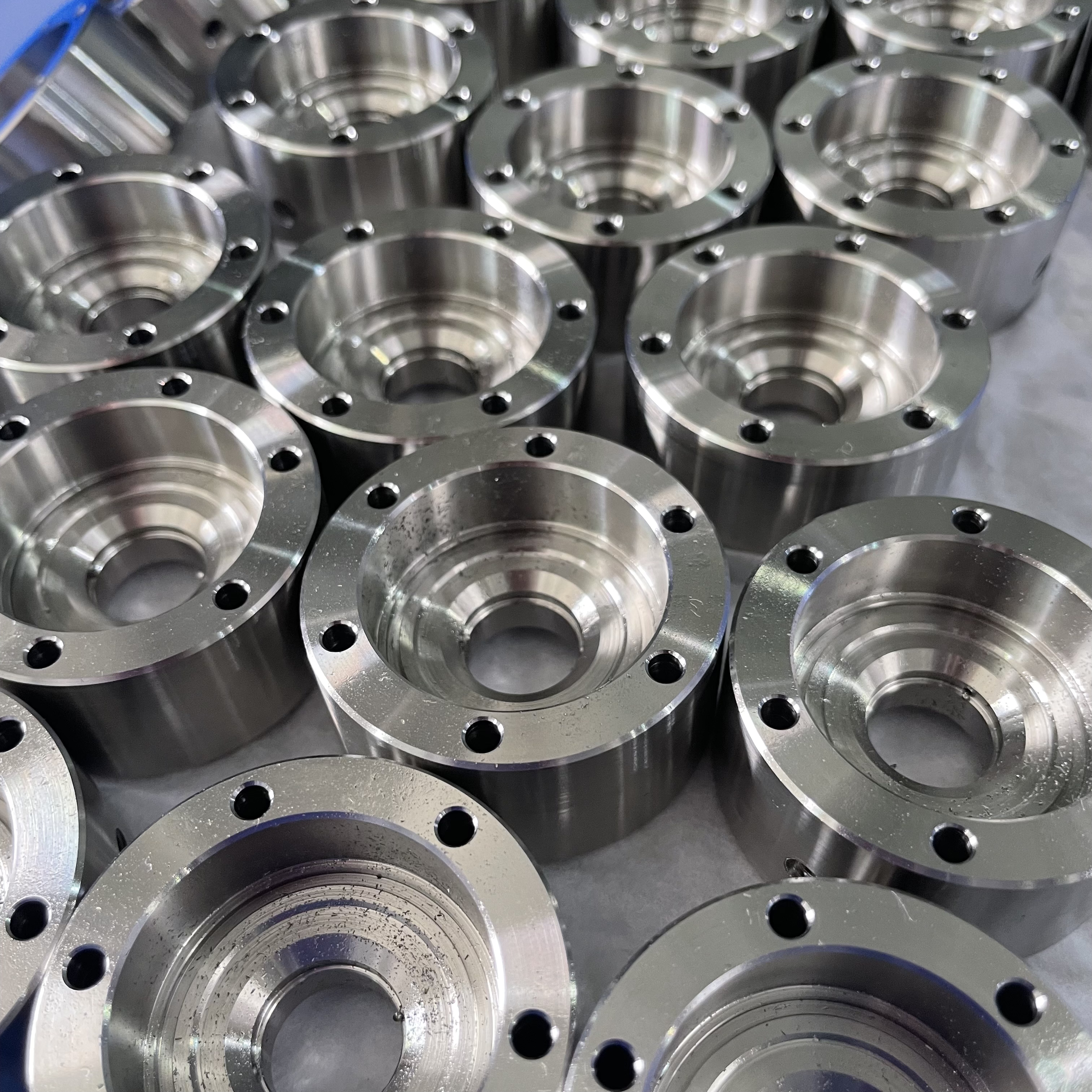Why Tolerance Control is Essential for High-Precision CNC Machining

Tolerance control plays a vital role in CNC machining. It ensures parts meet exact specifications, improving accuracy and functionality. Tight tolerances demand skilled operators and advanced tools, but they reduce errors and enhance precision machining. By maintaining control, you achieve high-precision machining, where every component fits perfectly and performs reliably.
Key Takeaways
Tolerance control is important to make CNC parts fit perfectly.
Keeping tight tolerances lowers mistakes and saves materials, cutting costs.
Good quality from tight tolerances earns customer trust and works well in key fields like aerospace and medical.
Understanding Tolerance Control in CNC Machining

What is Tolerance Control?
Tolerance control refers to the process of managing the allowable variations in the dimensions, shape, and surface quality of CNC-machined parts. It ensures that components meet precise specifications and function as intended. In CNC machining, tolerances define the acceptable range of deviation from the ideal measurements. For example, a part with a tolerance of ±0.01 mm can vary slightly within this range without compromising its performance. Tight tolerances are critical for achieving high precision and ensuring that parts fit together seamlessly.
Several factors influence tolerance control, including material properties, part geometry, cutting tools, and machine calibration. By understanding these principles, you can optimize machining processes and produce reliable components.
Role of Tolerances in CNC Machining
Tolerances play a vital role in determining the quality and functionality of CNC-machined parts. They ensure that components fit together correctly and operate efficiently. For instance, dimensional tolerancing controls the size and shape of parts, while geometric dimensioning and tolerancing (GD&T) specifies allowable deviations in shape, orientation, and position.
When you apply standardized tolerances, you reduce the risk of errors and rework. This approach also helps balance cost and feasibility, as overly tight tolerances can increase production time and material waste. By considering factors like material type, part size, and application requirements, you can set appropriate tolerance levels to meet customer expectations.
Types of Tolerances in Manufacturing
In CNC machining, several types of tolerances are used to ensure precision and functionality:
Tolerance Type | Description |
|---|---|
Dimensional Tolerances | Control the size, shape, and position of parts, ensuring they fit and function correctly. |
Geometric Tolerances | Specify allowable shape and orientation deviations, using symbols from GD&T to prevent excessive costs. |
Surface Finish Tolerances | Control the smoothness and texture of surfaces, expressed using symbols like Ra and Rz. |
Runout and Concentricity | Specify allowable deviations in rotation and alignment, ensuring smooth operation of parts. |
Position Tolerances | Define allowable deviations in position for precise fitting and assembly of parts. |
Understanding these tolerances allows you to produce high-quality components while maintaining cost-effectiveness. For example, surface roughness tolerances ensure smooth finishes, while GD&T symbols help communicate complex requirements clearly. By mastering these concepts, you can achieve tight tolerances and deliver exceptional results.
The Importance of Tight Tolerances in CNC Machining
Ensuring CNC Machining Accuracy
Tight tolerances are essential for achieving high levels of accuracy in CNC machining. When you maintain precise tolerances, you ensure that parts meet exact specifications, which directly impacts their performance and reliability. For example, industries like aerospace, medical, and automotive rely heavily on tight tolerances to produce components that function flawlessly under demanding conditions.
Industries that depend on tight tolerances:
Medical
Aerospace
Automotive
Defense and military
Electronics
Watchmaking and jewelry
Oil and gas
By achieving tight tolerances, you guarantee superior performance, leading to improved product quality and customer satisfaction. However, it’s important to note that tighter tolerances may increase production costs due to longer machining times and the need for specialized tools. Balancing these factors is key to optimizing both accuracy and efficiency.
Maintaining Consistent Quality and Functionality
Consistent tolerances ensure that CNC-machined parts maintain their quality and functionality over time. Environmental factors like temperature changes, humidity, and chemical exposure can affect part performance. For instance, thermal expansion may cause parts to expand or contract, leading to misalignment or assembly failures. You can mitigate these risks by selecting materials with suitable thermal properties and considering environmental conditions during the design phase.
Partnering with a manufacturer that uses advanced quality assurance tools further enhances part quality. Inspection protocols and well-maintained equipment ensure that your parts meet demanding specifications every time. This consistency not only improves functionality but also extends the lifespan of CNC-machined components.
Reducing Errors and Material Waste
Tight tolerances help you minimize errors and reduce material waste during CNC machining. When tolerances are well-controlled, parts fit together seamlessly, eliminating the need for rework or adjustments. This reduces scrap material and saves valuable resources.
By focusing on precision, you also avoid costly production delays caused by defective parts. Industries like medical and aerospace, where part quality is critical, benefit significantly from reduced waste and improved efficiency. In the long run, maintaining tight tolerances supports sustainable manufacturing practices while ensuring high-quality results.
Consequences of Poor Tolerance Control

Risk of Part Failure and Malfunction
Poor tolerance control increases the likelihood of part failure and malfunction. When tolerances are not maintained, parts may not fit together as intended. This misalignment can lead to operational inefficiencies or even complete system breakdowns. For example, in industries like aerospace or medical, where precision is critical, a single faulty component can compromise safety and performance. You can avoid these risks by ensuring tight tolerances during the CNC machining process. Consistent tolerances guarantee that parts perform reliably under demanding conditions, reducing the chance of failure.
Increased Costs Due to Rework and Scrap
Inadequate tolerance control often results in higher costs due to rework and scrap. Parts that fail to meet specifications require additional machining or must be discarded entirely. Manual deburring processes, prone to human error, exacerbate this issue. Inconsistent results lead to more defective parts, increasing waste. Automated processes, such as those using advanced tools like Xebec, help maintain tight tolerances. These systems minimize handling and ensure consistent quality, reducing the risk of costly rework and scrap. By prioritizing precision, you can save resources and improve overall efficiency.
Key factors contributing to increased costs:
Inconsistent manual deburring.
Difficulty achieving precise specifications for critical parts.
Damage caused by excessive handling during rework.
Delays in Production and Delivery
Poor tolerance control disrupts production schedules and delays delivery timelines. Defective parts require rework, which consumes valuable time and resources. This delay can cascade through the supply chain, affecting customer satisfaction. For industries relying on CNC machining, such as automotive or electronics, timely delivery is crucial. Maintaining tight tolerances ensures that parts meet specifications on the first attempt, streamlining production. You can avoid delays by implementing robust quality assurance measures and using advanced CNC tools to achieve consistent results.
Tolerance control plays a crucial role in high-precision manufacturing. By maintaining tight tolerances, you ensure that parts meet exact specifications and perform reliably. This approach enhances product quality and reduces waste, which directly improves customer satisfaction.
Benefits of adopting best practices for tolerance control:
Proper tolerances prevent downtime and ensure smooth operation of components.
Consistent quality builds trust and strengthens customer relationships.
Advanced inspection tools, though costly, help achieve precision and reliability.
When you prioritize tight tolerances, you not only improve the performance of CNC-machined parts but also contribute to long-term success in manufacturing.
FAQ
What are the most common tolerance levels in CNC machining?
Tolerance levels typically range from ±0.01 mm to ±0.05 mm. These depend on the part's application, material, and industry requirements. Tight tolerances ensure precision and functionality.
How do you choose the right tolerance for a project?
Consider the part's function, material properties, and manufacturing costs. Tight tolerances improve accuracy but increase production time and expense. Balance precision with practicality for optimal results.
Can tight tolerances affect production speed?
Yes, tighter tolerances require slower machining speeds and advanced tools. This ensures accuracy but may increase production time. Proper planning helps you balance speed and precision effectively.
See Also
The Significance of Accurate CNC Machining in Production
Achieving Precision in Parts Manufacturing Through CNC Machining
CNC Machining Essentials: Tolerances, Prototypes, and Material Choices
Expert CNC Milling Techniques for High-Precision Parts
Enhancing Quality in Manufacturing with CNC Precision Techniques
About US
Follow Us
Your prototype holds unparalleled significance, and we deeply value its uniqueness. Collaborating with you during the preparation phase for running your prototype or parts is a commitment we gladly embrace. Whether it's a single part or a complex assembly, we are dedicated to selecting the optimal tools and pathways to bring your envisioned product to life.
At Precision Fab CNC Machining, we specialize in producing parts for prototypes, short runs, and high-volume production. Our prototyping machine capabilities extend across metal, plastic, and wood machining, with welding fabrication services available to complement and finalize your prototype if required.
Address
Address: Room320 10F, Building A,Nanshan international building, Dayawan District, Huizhou, Guangdong, 516001 China
Contacts
billy@timaycnc.com

